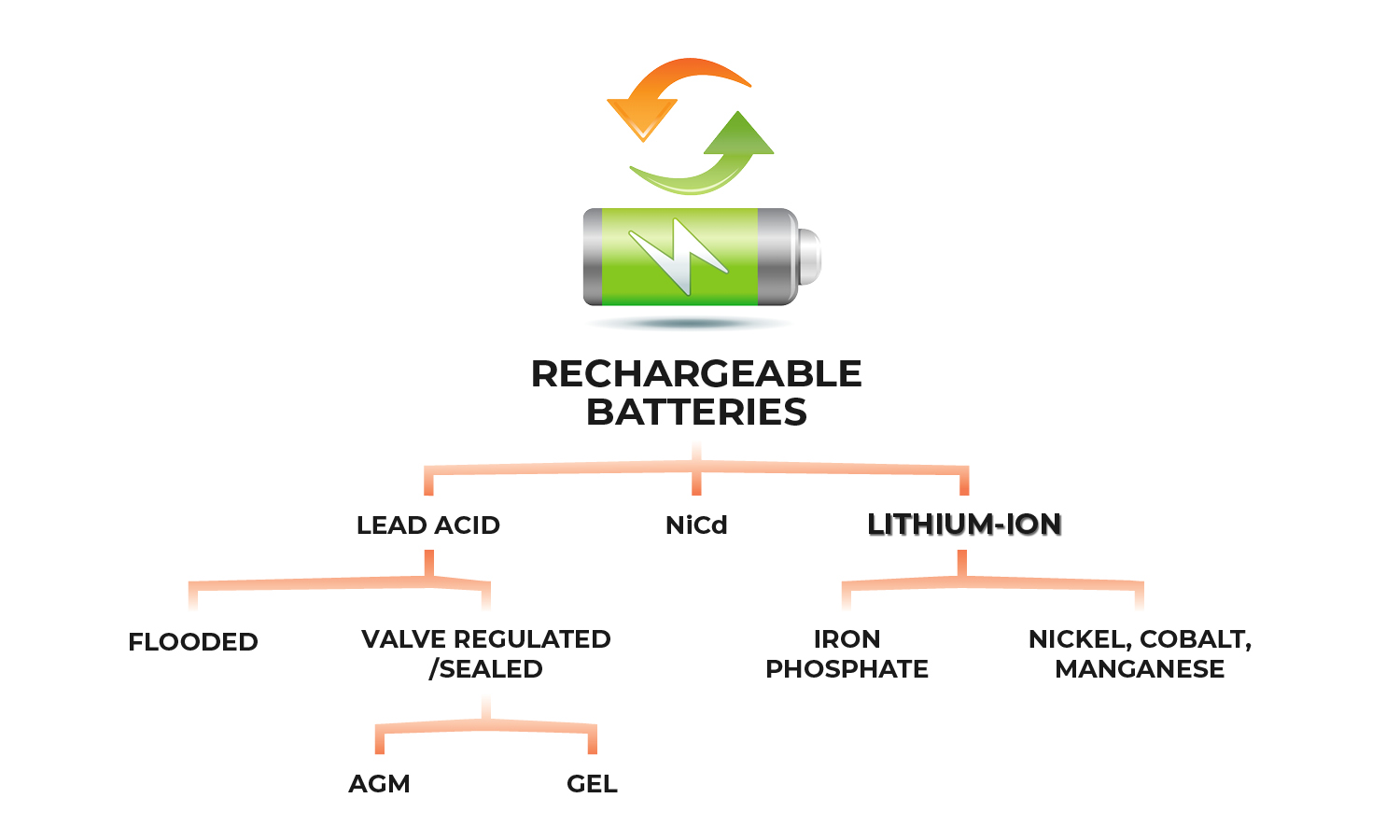Lead, which is the heaviest non-radioactive metal, has been the standard in batteries for decades up until recently.
Lithium has now become the go-to chemistry for batteries and power storage power of the sun, when used in solar power storage needs around the world – from recreational vehicles to emergency power supplies.
Lithium batteries are an extremely efficient way to harness the power of the sun, when used in solar power storage applications. The high energy density and optimal dimensions of the latest generation of lithium batteries (Lithium-iron) has allowed a radical improvement in the capacity, efficiency and safety in battery technology.
Here are some features explaining the disparity between lead acid and lithium batteries:
- Weight: Lithium batteries are one-third the weight of lead acid batteries.
- Efficiency: Lithium batteries are nearly 100% efficient in both charge and discharge, allowing for the same amp
hours both in and out. Lead acid batteries’ inefficiency leads to a loss of 15 amps while charging and rapid discharging drops voltage quickly and reduces the batteries’ capacity. - Discharge:Lithium batteries are discharged 100% versus less than 80% for lead acid. Most lead acid batteries do not recommend more than 50% depth of discharge.
- Cycle Life:Most lithium batteries are designed for the possibility of multiple cycles per day when required. AGM lead acid batteries are designed for one cycle per day. The cycle life is greatly affected by higher levels of discharge in lead acid, versus only slightly affected in lithium batteries.
- Voltage:Lithium batteries maintain their voltage throughout the entire discharge cycle. This allows for greater and longer lasting efficiency of electrical components. Lead acid voltage drops consistently throughout the discharge cycle.
- Cost: Despite the higher upfront cost of lithium batteries, the true cost of ownership is far less than lead acid when considering life span and performance.
- Environmental Impact:Lithium batteries are a much cleaner technology and safer for the environment.
- BMS: Lithium batteries are equipped with an integrated Battery Management System (BMS) with active cell balancing. Ensuring that the available energy is automatically divided between cells to guarantee efficient and safe
functioning of the battery.
Lithium-ion Batteries
A lithium-ion battery (a.k.a Li-ion) is a rechargeable battery with lithium cobalt dioxide (LiCoO2) or lithium manganese oxide (LiMn2O4) as a cathode.
Lithium-Cobalt-Oxide -LiCoO2- characteristics:
- Highest energy density
- Popular for phones, PC’s etc.
- Risk of thermal runaway in larger systems
Lithium-Iron-Phosphate – LiFePO4
A lithium-iron battery is also a rechargeable type of battery but made with lithium iron phosphate (LiFePO4) as the cathode material. Phosphate based technology possesses superior thermal and chemical stability which provides better safety characteristics than those of the lithium-ion technology made with other cathode materials.
Lithium phosphate cells are incombustible in the event of mishandling during charge or discharge. They are more stable under overcharge or short circuit conditions and they can withstand high temperatures without decomposing. When abuse does occur, the phosphate-based cathode material will not burn and is not prone to thermal runaway. Phosphate chemistry also offers a longer cycle life.
Lithium Iron Phosphate characteristics:
- Most stable of all lithium technologies
- Good density
- Long life
- Economical
- The lithium-iron (LiFePo4) battery has a slight edge over the Li-ion (LiCoO2) battery for safety. This is important. If a battery becomes overheated it should NOT catch fire in the case of overcharging (thermal runaway)
- The lithium-iron battery has superior chemical and thermal stability. A lithium-iron battery remains cool at room temperature while the Li-ion may suffer thermal runaway and heats up faster under similar charging conditions
- LiFePO4 is a nontoxic material, however LiCoO2 is hazardous in nature and is not considered a safe material.
Disposal of Li-ion battery is a big concern environmentally for the manufacturer and user.
Benefits of Lithium-Iron Phosphate Batteries
- This chemistry is recognised as one of the safest lithium chemistries currently in use
- Long Life Cycle
- High Power Density
- Wide Temperature range
- Environmentally friendly
- Modular design allows for flexible expansion of system sizes over the entire lifetime of the system

